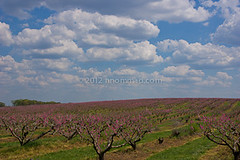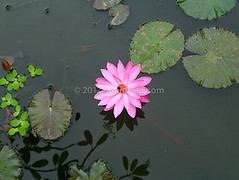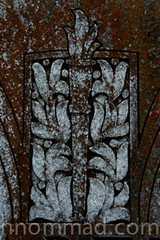The International Cherry Blossom Festival in Macon, GA – rated a top event by the Southeast Tourism Society – is a must-do for festival-goers and flower lovers alike. Combine the efforts of citizens to decorate seemingly every surface with something pink, the festival’s variety of activities & entertainment, a vast ocean of flowering Yoshino cherry trees, and you have a recipe for what may truly be the “pinkest party on Earth.”
The discovery of cherry trees in Macon dates to 1949, when local realtor William A. Fickling, Sr., noticed an unusual tree with beautiful spring blooms in his backyard. In 1952, Mr. Fickling visited Washington, D.C., and spotted one of that city’s famed Yoshino cherry trees. Later, Mr. Fickling returned to Washington with a cutting from his own tree and saw that the two trees were a perfect match. Soon thereafter, Mr. Fickling began sharing cuttings from his tree with friends and neighbors.
In the early 1970s, a newcomer to Macon, Carolyn Crayton, was inspired by the trees’ beauty. She had an idea to transform Macon into an idyllic vision in pink with thousands of Yoshino cherry trees blooming throughout the city. With the help of Mr. Fickling, the first mass planting of trees was organized in the Wesleyan Woods neighborhood. In 1982 the International Cherry Blossom festival was launched to celebrate spring, the trees, and city beautification.
Today the festival is a major event spread over two weekends that draws thousands of visitors and pumps much-needed millions of dollars of revenue into the economy. The trees are beautiful, as are the flowering azaleas, dogwoods, and Bradford pear trees that make springtime so enjoyable. Unless you suffer from allergies.
An interesting fact is that the number of cherry trees in Macon – 300,000 – far exceeds Washington, DC’s, 6,000-7,000 trees planted around the Tidal Basin. During the short-lived cherry blossom season, Macon is literally awash in pink blooms. Sadly, though our home is in the middle of cherry tree central, we only have pink azalea blooms to show off to the neighborhood. Thankfully, there are plenty of photo opps in the neighborhood and close by.













